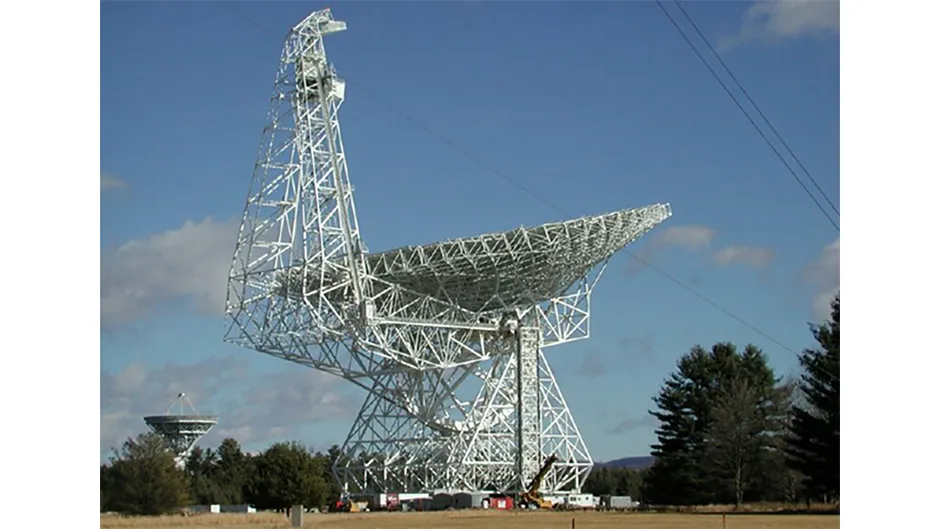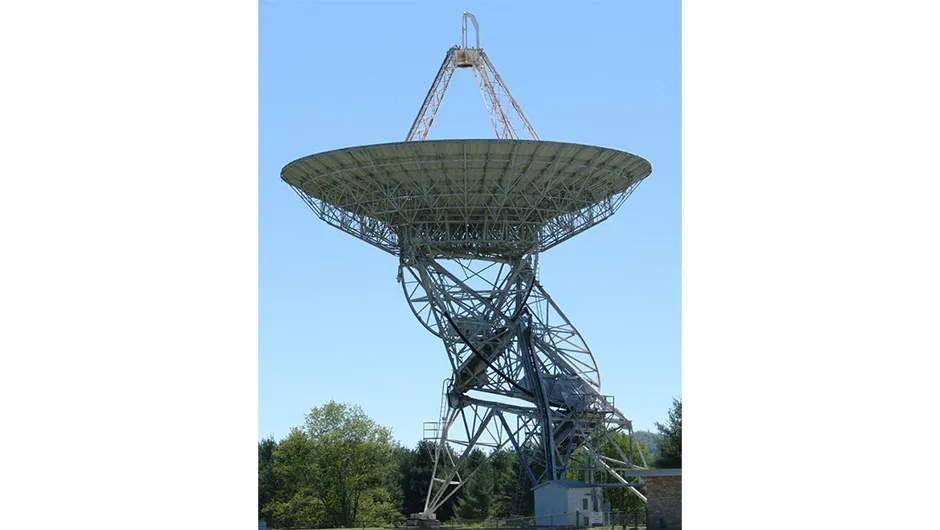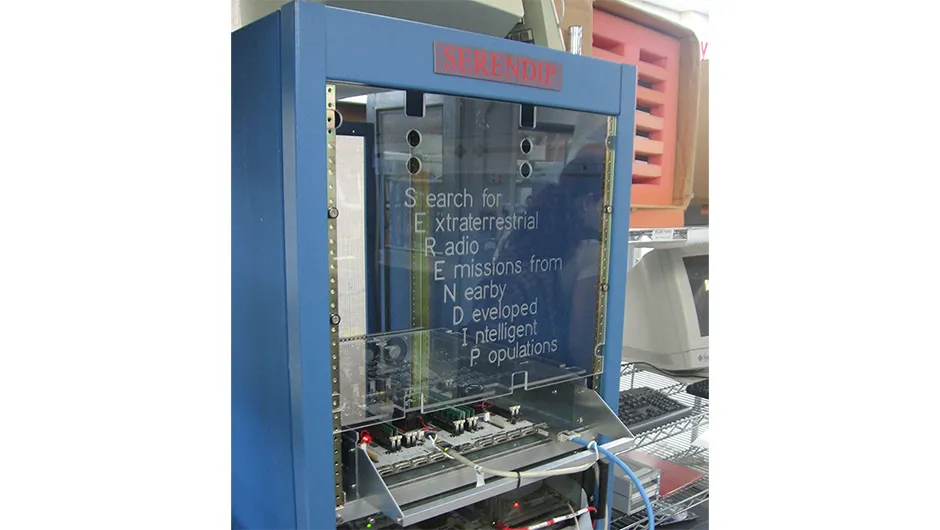The antennas of ESO’s Atacama Large Millimeter/submillimeter Array in Chile, set against the backdrop of the Milky Way. Image Credit: ESO/B. Tafreshi (twanight.org)
Two possibilities exist: Either we are alone in the Universe or we are not. Both are equally terrifying.
Arthur C. Clarke
The search for extraterrestrial intelligence (SETI) is concerned with looking for artificial signals in space in the hope of discovering extra-terrestrial civilisations outside of our Solar System.
Scientists have been looking and listening for artificial signals in space since the 1960s, when astrophysicist Frank Drake conducted the first ever SETI search.
The field is now more alive than ever, as evidenced by projects like Breakthrough Listen, founded by Yuri Milner and supported by scientists such as Stephen Hawking.
The project is paving the way for discovering life outside our Solar System in the hope of catching a glimpse of an intelligent civilisation. One day, it may be able to answer that enduring question 'will we ever be able to find life beyond Earth?'
Hello? Anyone out there?
The project will span 10 years and search over one million stars using radio and optical telescopes (most artificial signals are transmitted through radio or optical), as well as utilising resources that have not been used previously in other SETI programmes.
With work having begun in January 2016, Breakthrough Listen has already collected petabytes of data (one petabyte being equivalent to the data stored on 223,000 DVDs) as a result of its aim to observe in millions of different frequency channels.
“One thing that is already being done by the project is to get time on the radio telescopes at Green Bank and Parkes observatories, and use the special purpose hardware that is available on them to search for narrowband signals,” says Professor Martin Rees, Advisory Member for the Breakthrough Listen project.
“Breakthrough Listen will allow us to do a much deeper and more systematic search than ever before.”
Astronomers involved in the project are listening out for messages from the 100 closest galaxies to us, using instruments 50 times more sensitive than existing SETI telescopes.
The project will also be able to cover 10 times more of the sky than previous programmes using radio surveys, as well as cover five times more of the radio spectrum, and conduct it 100 times faster.

Constantly having to strike a balance in their methods of using radio to look at nearby stars, or optics to search extragalactically, the project’s astronomers must adapt to cover all possible corners of space.
A narrowband optical pulse (such as that of an emitted laser) could indicate signs of alien technology.
The Lick Observatory in California is currently being used to conduct searches for optical flashes that could indicate emitted light from alien sources, with the possibility of doing an all-sky survey.
Using this method, astronomers could theoretically detect the energy of a normal household light bulb from 40 trillion kilometres away.
They are also using radio telescopes to look for signals, such as the Parkes Observatory in Australia and the Green Bank Observatory in the US.
Using radio, it is possible to locate extra-terrestrial signals much more easily due to its repetitive nature and narrow bandwidths.
Astronomers working on the project are always trying to vary their instrumentation use.
“Discussions are ongoing to be able to conduct a programme at the MeerKAT Array, which would be able to receive 400 beams simultaneously [a beam is angular region of sensitivity, matching the area in the sky], and is really the optimum telescope that would cover the southern hemisphere,” says Professor Rees.
“A lot of the success will depend on the group at the University of Berkeley California that has been developing elaborate hardware for multiband analysis.”

The first batch of collected data was released in April 2016, and since then there have been thousands of terabytes more.
The plan is to break down the data into smaller chunks and then allow the public to participate in processing it.
This idea is similar to the SETI@Home project that allows volunteers to download software onto their computers that processes data collected by astronomers, even while the computer is not being used.
Hope for the Future
With technology advancing at such an incredible pace, humanity has already begun to leave the comfort of Earth to explore the Universe.
Even though the SETI field is a small area of research, astronomers feel it is worth investing in, as discovering intelligent life outside of our Solar System would be revolutionary, allowing us to delve into a new era for mankind.

The search so far
In the past, there have been many programmes established in the SETI field. Here are some of the most notable projects conducted.
Project Ozma

When: April - July 1960
Where: National Radio Astronomy Observatory, USA
Method: Observed at the 1.42 GHz frequency known as the ‘water hole’, as there is minimum interference from natural cosmic noise, and looked at Sun-like stars Tau Ceti and Eridani
Equipment: Conducted with the 26m Howard E. Tatel radio telescope
Known for: Paving the way for SETI research
Ohio State University SETI Programme

When: 1973-1995
Where: Perkins Observatory, US
Method: Observed at 1.42 GHz (‘water hole’) frequency conducting sky surveys
Equipment: ‘Big Ear’ radio telescope (equivalent to 52.5m dish)
Known for: The ‘Wow!’ signal, which was a strong radio signal that bore marks of extra-terrestrial origin
SERENDIP (Search for Extraterrestrial Radio Emissions from Nearby Developed Intelligent Populations)

When: 1979 - Present
Where: Various locations around the world
Method: Records and measures spectra from 400 MHz to 1.42 GHz. Distinguishes potential extra-terrestrial signals and acts as a ‘piggy-back’ by analysing deep-space radio telescope data as astronomers are conducting research on the telescopes
Equipment: SERENDIP VI (current) spectrometer receiver
Known for: Finding 400 suspicious signals
Project Phoenix (1995 – 2004)

When: 1995 - 2004
Where: Parkes Observatory, Australia (1995 - 1996) / Green Bank Observatory, USA (1996 - 1998) / Arecibo Observatory, USA (1998 - 2004)
Method: Observed between 1.2 GHz and 3 GHz. Scanned 800 stars within 200 lightyears of each other
Equipment: 64m radio telescope at Parkes Observatory / 43m radio telescope at Green Bank Observatory / 133m radio telescope at Arecibo Observatory
Known for: Enabling scientists to conclude that our Solar System is quiet, as no signs of extra-terrestrial life were found
Allen Telescope Array (ATA) (2007 - Present)

When: 2007 - Present
Where: Hat Creek Observatory, USA
Method: Observations made between 500 MH - 11.2 GHz. Studies many areas of the sky at once, including over one million nearby stars
Equipment: 42 x 6.1m radio dishes, with plans to expand to 350
Known for: More than two million signals have been followed up and classified